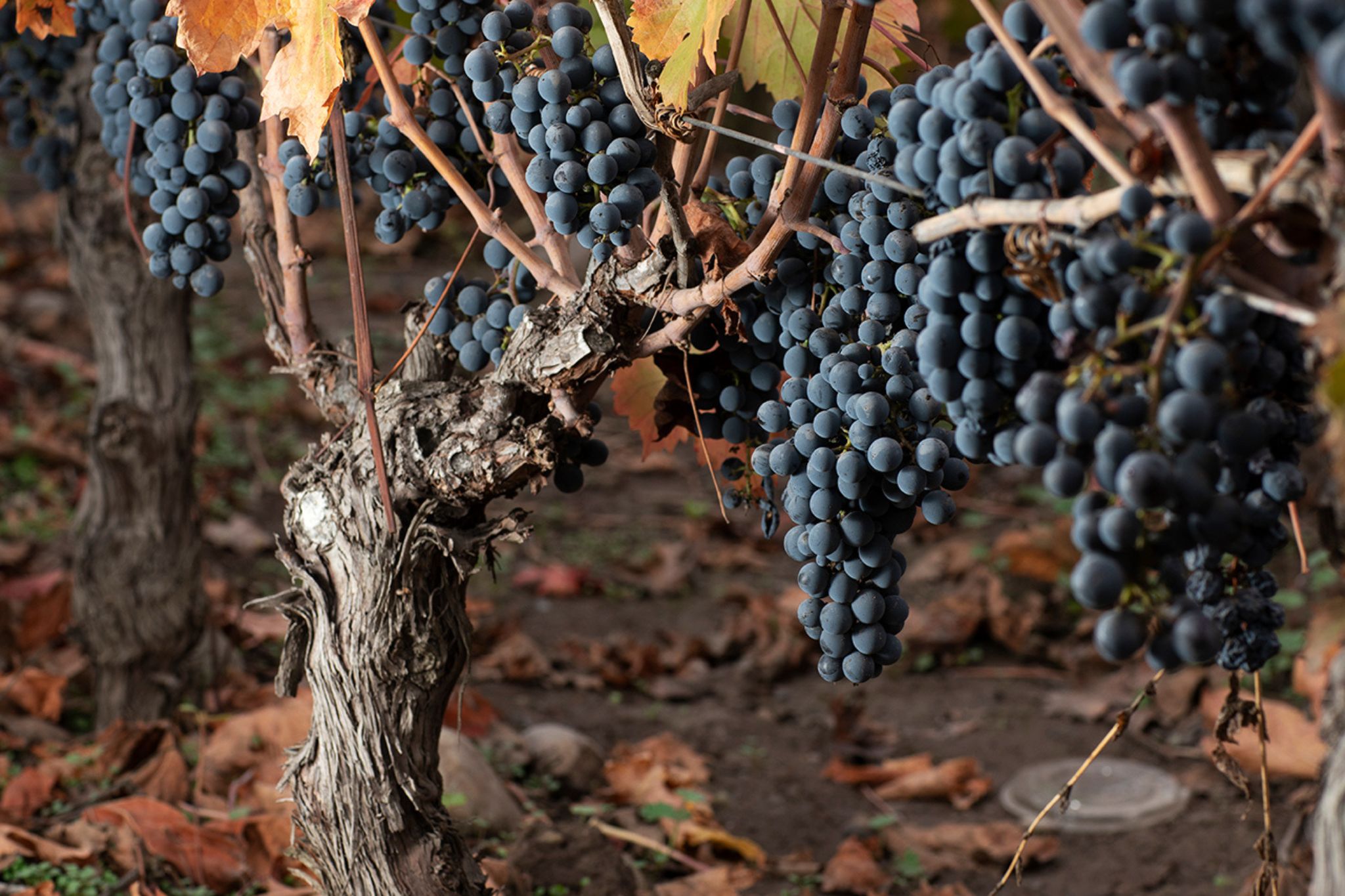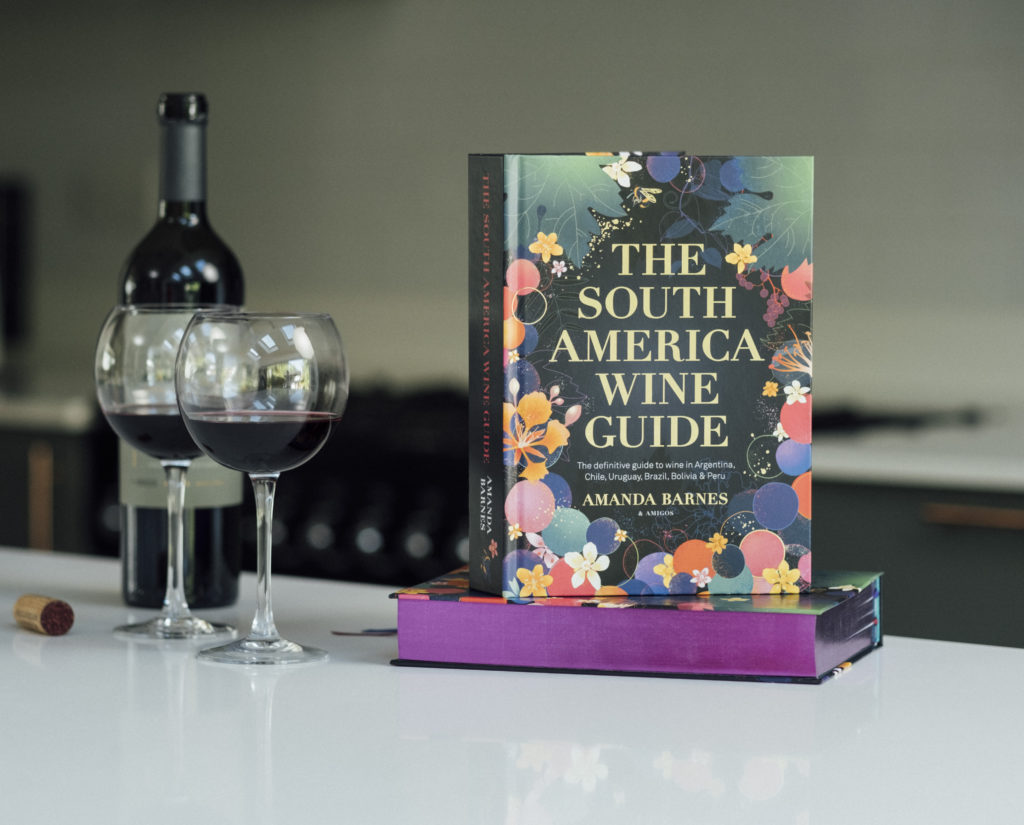Carmenère is a well-travelled French variety that found its second home in Chile where it is now so widely grown that Chile is the world’s top producer of the variety, making 98% of it!
While it adapted to Chile very well, it was under the guise of a different variety – Merlot – that Chilean wine producers planted and produced it. The slightly different style that this Merlot in Chile produced from the Merlot found in other parts of the world led Chilean winemakers and drinkers to call it ‘Merlot Chileno’ as opposed to just plain old Merlot. This was indeed very different from any other Merlot because, as the intrepid French ampelographer Jean Michel Boursiquot discovered in 1994, it was, in fact, the long-lost French variety, Carmenère. He spotted the error because Carmenère has distinctive twisted stamens (unlike Merlot and most other grape varieties).
Since 1994, not only the name of the variety changed but viticulturists and winemakers began working the variety in a different way and the style changed. The separation of varieties also changed the style of Chilean Merlot, although if you find a pre-1994 bottle of Merlot, it could likely be Carmenère.
Guide to Carmenère in Chile
Hectares planted: 10,837 hectares
Key descriptors
Deep ruby colour. Aromas of paprika, forest fruits & wild herbs. Dry with fine tannins (medium), soft acidity (low) and full body.
Winemaking styles
The harvesting dates for Carmenère vary wildly depending on the house style, and so you can have both leaner and more opulent styles and alcohol ranging from 13% to 15%. Typically Carmenère is oaked but there are some modern unoaked styles. Monovarietals and blends are common.
Although it can look quite similar to Merlot in the vineyard, Carmenère is much more like Cabernet Franc in terms of character in the glass. With distinctive herbaceous and spicy aromas, Carmenère can be defined by its smoked paprika and wild herbaceous notes — not too dissimilar from the aromas you find in Cabernet Franc.
Today winemakers are trying to find the middle ground between keeping the verve and energy of its peppery spice while embracing the fleshy fruit flavours and approachable, silky mouthfeel it can offer. My favourite Carmenère wines are thrillingly savoury and wild on the nose, but always approachable on the palate — making them incredibly appealing to drink.
Winemakers have found that Carmenère does need a long ripening period, but it doesn’t need too much heat — and the secret is in striking the right balance between canopy management, irrigation, yield and harvest dates. Ageing for some time in oak barrels is still common but in moderation, often combined with ageing in foudres, concrete eggs and even clay tinajas.
Favourite producers
Antiyal, Lapostolle, Viña Carmen, Concha y Toro Carmín de Peumo, Montes, Casa Bauzá, TerraNoble, Santa Rita, Casa Silva Microterroir, Undurraga Terroir Hunter, Santa Carolina Herencia.
Terroir Selection: Carmenère wines to try from Chile
Opulent & silky
CASA SILVA, Microterroir
Los Lingues / $$$ / Drinking window <20 years
MONTES, Purple Angel
Apalta / $$$ / Drinking window <20 years
One of the great classics of the Carmenère world, Purple Angel is a big wine that has been made from concentrated fruit and high-quality oak ageing and needs some time to spread its wings. Although you know that coming from Aurelio Montes and his team, these wings won’t be clipped and this top wine always goes flying from the shelves. Cellar for a few years before opening. See full tasting note
ERRAZURIZ, KAI
Aconcagua / $$ / Drinking window <15 years
Another iconic Carmenère for Chile, Kai comes from the Errazuriz clan who specialise in the Aconcagua region. This version is richly spiced with deep red fruits and has tobacco and dark chocolate notes from years aged in barrels.
VON SIEBENTHAL, Tatay Cristobal
Aconcagua / $$ / Drinking window <15 years
Also in Aconcagua valley, this is the top wine for this smaller producer – Von Siebenthal. A tense wine with darker fruits and a great structure that makes this a wine to cellar for a few years and enjoy when it is well aged to enjoy its optimum expression. Owner Mauro Von Siebenthal set out to make world-class wines from his property in Aconcagua, and this is a good sign of where these wines will go.
SANTA CAROLINA, Herencia
Peumo / $$ / Drinking window <25 years
This is a deeply seductive Carmenère that showcases Peumo’s affinity for this variety — pulling you in with notes of dried rose petals, exotic spices, tar and dried black fruit. One of the most luxurious and seductive Carmenère wines in Chile with a silky, long and aromatic finish. Worth lingering over.
Fresh & peppery
UNDURRAGA, Peumo, Terroir Hunter
Peumo / $$ / Drinking window <10 years
Terroir Hunter is the excellent series of single vineyard wines from Undurraga winemaker Rafael Urrejola. The Terroir Hunter concept uses different wine regions from around Chile to make emblematic single variety wines that best represent the place, or vice versa. Filled with vibrant red fruit and herbal notes, this Carmenère has a lot of characteristics of Peumo and also of the variety itself. The mouth is still fresh with tension from good acidity, and it doesn’t drown out any of Carmenère’s character with oak.
LAPOSTOLLE, Cuvée Alexandre Carmenère
Apalta / $$ / Drinking window <10 years
This is textbook Apalta Carmenère and I love it! Filled with red bell peppers, bright red fruits and exotic spices — it’s actually quite lively and leafy on the finish, as it comes from the cooler exposure of the Apalta hills. And at just over US$20, it’s a snip.
CALCU, Reserva Especial
Colchagua / $ / Drinking window <10 years
Calcu specialise in making fresher wines with higher acidity due to earlier harvesting, and their Carmenère is no exception to the rule. Lively red fruits and a tickle of spice make this a bright wine that is very food friendly, and its $15USD price tag is particularly friendly.
FALERNIA, Carmenère Pedriscal Single Vineyard
Vicuña / $$ / Drinking window <10 years
A spicy and wild Carmenère from a small plot of vines on river gravel. Loaded with pepper, spice and red fruit, this wine has a slightly salty finish and is calling to be uncorked with spicy tacos or empanadas de pino!
DE MARTINO, Alto de Piedras Carmenère
Isla de Maipo / $$ / Drinking window <20 years
De Martino advocates that less is more and this wine exemplifies their philosophy: pure Maipo mountain fruit with minimal intervention. A classy wine with restrained notes of red berries and dark spice, fresh acidity and fine tannins.
VILLALOBOS, Lobo Carmenère
Lolol / $$ / Drinking window <10 years
This family producer is one of the most exciting in coastal Colchagua, in my opinion, and this Carmenère is a case in point. A chalky nose filled with cracked black and green pepper, smoked paprika and some red fruit underneath, this is juicy and fresh — the style of Carmenère that I’d like to find more of in Chile.
SANTA RITA, Floresta Carmenère
Apalta / $$ / Drinking window <15 years
This old-vine Carmenère from a dry-farmed vineyard with granite soils is a delight: really vibrant with fresh red fruit, brush herbs and cracked pepper. On the finish, it is long, spicy and juicy — a wonderful wine that exudes the more elegant, charming side of both Carmenère and Apalta. Another superb wine from Santa Rita’s Floresta range.
TERRANOBLE, CA2
Lolol / $$ / Drinking window <10 years
Coming from the granite soils of the coastal hills of Lolol, this 2017 vintage showed all the ripeness of the hot vintage with intense ripe, dark fruit aromas, but also graphite, ashy and meat on the nose. It’s a complex wine with spicier tannins and good freshness. I loved it.
Carmenere Day – 24 November
The discovery of Carmenère in Chile has been marked by the annual Carmenère Day, on 24th November. The first celebration was held in 2014, and each year Wines of Chile encourages drinkers all over the world to get on board with drinking Carmenère and sharing photos and posts over social media with #CarmenereDay
Want to know more about the
wine regions of Chile?
ORDER YOUR COPY of The South America Wine Guide now!
E-book AVAILABLE ONLINE too.
Check out our latest guides!
- Guide to Sauvignon Blanc in South America
- Guide to Torrontes in South America
- Guide to Viognier in South America
- Terroir tour of Malbec in Argentina & Chile
- Guide to Riesling in South America




